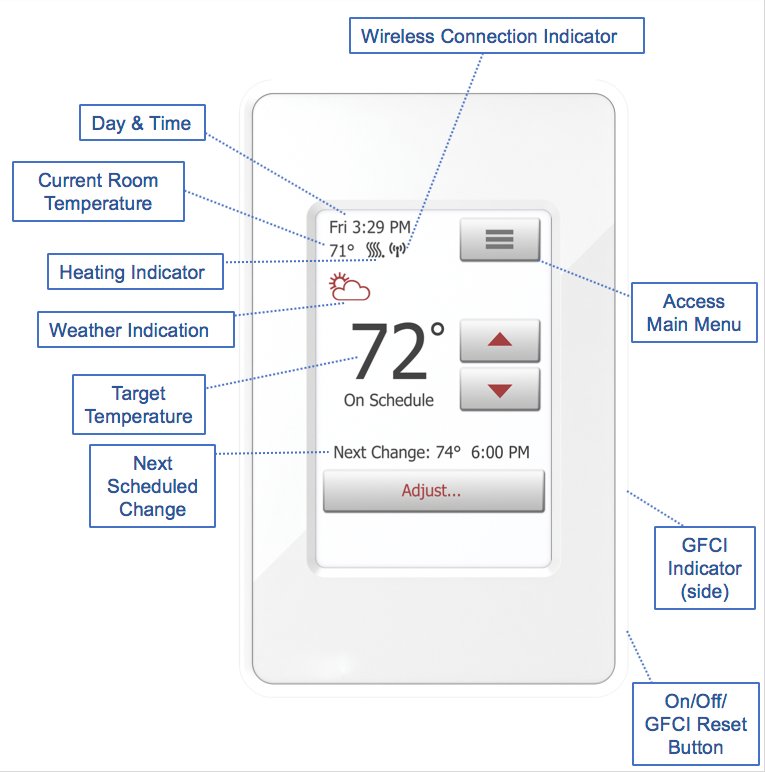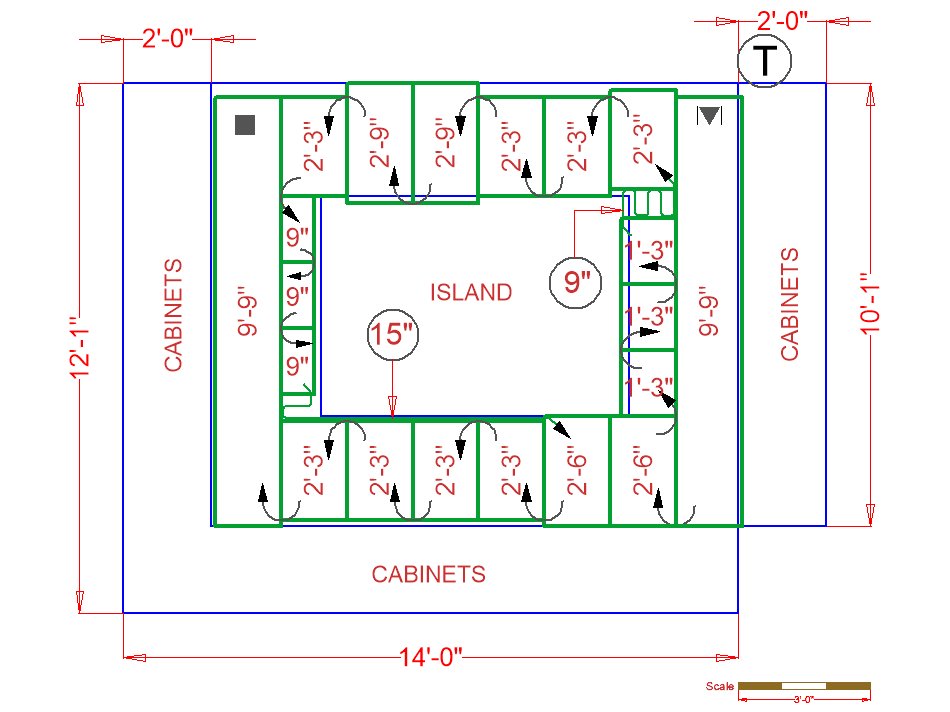
When it comes to radiant floor heating, there are a lot of numbers to be aware of. Wattage, voltage, amperage, kilowatt hours (kWh), square footage (or square meters), cost of materials — these are just a few of the main offenders. So why add “kilowatt load usage” to the list?

If you have one of WarmlyYours Radiant Heating’s new touchscreen thermostats, you’ve already noticed that there’s a step during the setup process that asks for the floor load. This information is used to help the programmable thermostat track usage statistics, which are then reported out via the built-in Energy Log that comes with both the nSpire Touch and nSpire Touch WiFi thermostats. Ultimately, this will help you track energy consumption which can in turn help you make adjustments to save on your electricity bill. If you purchased the floor-heating system yourself, you’ll already have this floor load number in your order documentation. But if your floor-heating system came with the house or you just got a new thermostat and don’t have the kilowatt load usage information on hand, here’s how to find out what it is.
If your floor-heating system is located under tile or stone, its wattage should be 15 watts per square foot. Therefore, you should multiply 15 by the square footage of heated area in the room (not the entire square footage of the room). This gives you the total wattage of the room. Divide this number by 1,000 to get the kilowatts.
If your floor-heating system is located under carpet or laminate, its wattage should be 12 watts per square foot. In this case, multiply 12 by the square footage of the heated area in the room and divide by 1,000 to get the kilowatt load usage.

For example, the above bathroom floorplan shows an 86 square-foot room with about 49 square-feet of TempZone™ Cable installed under tile or stone. Using the formula above, the kilowatt load usage would be 0.735.
15 x 49 = 735
735 ÷ 1,000 = 0.735 kilowatts

This kitchen floorplan shows a 169 square-foot room with about 67 square-feet of Environ™ Flex Rolls installed under laminate. Using the formula above, the kilowatt load usage would be 0.804.
12 x 67 = 804
804 ÷ 1,000 = 0.804 kilowatts
If you've just ordered or received your floor-heating system, you can find the kilowatt load usage along with the product's wattage, amperage and more on the floor plan section of your SmartPlan custom installation and electrical plan.
With this information in hand, you can quickly and easily get through the thermostat setup process and have your floor-heating system connected in no time at all.
To see how the setup process works for WarmlyYours Radiant Heating’s nSpire Touch WiFi thermostat, check out this video. You can also learn more about our touchscreen thermostats and electric floor-heating systems by visiting www.warmlyyours.com.
Have Questions About Your Project?
Our team of Radiant Experts is ready to help!
Comments
Stay Updated
Get the latest radiant heating news and tips delivered to your inbox.



This article clearly describes the "how," but not the "why!" Does setting the kW usage affect the operation of the thermostat, or is it for the purpose of computing usage statistics?
That's a great question. This information doesn't affect the operation of the thermostat at all. It's just for tracking usage stats, which are then reported out in the thermostat's built-in Energy Log. Thanks again for the question--we've edited the blog to include that information for future readers!
Is this calculator for per day per hour per week per month? Looking to build shop with in foot heat concrete slab 25fx100f in Alaska.Trying to figure out max load electrical use
William, that's a great question. This calculation (heat output wattage x square footage / 1,000 = kilowatt load) is a constant for kilowatt load that will remain unchanged regardless of duration as long as the system is on. So if you have a 2,500 sq. ft. shop, your kilowatt load (using our most common floor heating product line, TempZone) would be 37.5-kilowatts. Hope that helps!
is your most recent post regarding KW calculations per day? the home in alaska at 2,500sf would be 37.5KW/day? how many hours of usage, temperature settings, etc?
Dave, The kilowatt load is a constant while the floor heating system is on. So it will remain the same if the system is on for an hour or for an entire day. The duration you run your system for will, however, impact how much energy you're charged for. A great tool for figuring out how much this will be is our Operating Cost Calculator: https://www.warmlyyours.com/tools/cost-calculators Just by entering a few product details (like square footage, hours of usage, and your location--for figuring out the local electrical cost), you'll get a rough estimation for how much the radiant heating system will cost to run. The average daily use for a system that our customers report is about 8 hours per day, which is the default setting for the tool.
Where can I change the floor load setting after I set up the thermostat?
That's a great question. You'll need to go to "User Settings" and then hit "User Reset". The unit will need to be reset to factory settings and then during the initial setup you can enter floor load when prompted. Hope this help!
Why does the calculation is using the whole square footage of the bathroom when you clearly have areas not covered with mats. Wouldnt those need to be deducted? Like the shower basin and sinks
You are absolutely correct and thank you so much for helping point out that error! The calculation should absolutely be based on the square footage of the heated area (not the entire room). We've gone ahead and edited the post to correctly reflect that. Thank you again for helping us correct that issue.
How do I change the floor load setting in the thermostat without executing a factory reset that will lose all my other settings?
That's a great question but, unfortunately, you'll need to perform a factory reset in order to change the floor load setting for the thermostat.
Hi By changing/ raising Kilowatts floor load setting on the thermostat will that provide more heat or is it base on consumption Thank you
The floor load for your system is just based on the electrical draw of your heating system (which is itself the product of both the heating element's per sq. ft. draw and the total sq. ft. being heated), so it's best to use the accurate figure and not to change it. The best way to change the heat output of your system is to just simply change the temperature (floor or ambient) on the thermostat. Hope that helps!
How Kw can have 100m pipe 16mm alpvc in under floour or how Kw can provide for one squad meter if pipes have 20cm distance from pipes
Thanks for the question. It looks like you might be asking about hydronic (water-based) systems. If that's the case, then it's probably best to speak with the hydronic manufacturer to get the most updated information about how energy use is calculated for those systems. But if you're talking about electric systems, then there's probably a couple of extra pieces of information we would need in order to provide an answer. The best bet is to either use our online chat tool or to simply give us a call at 1-800-875-5285. Hope that helps!